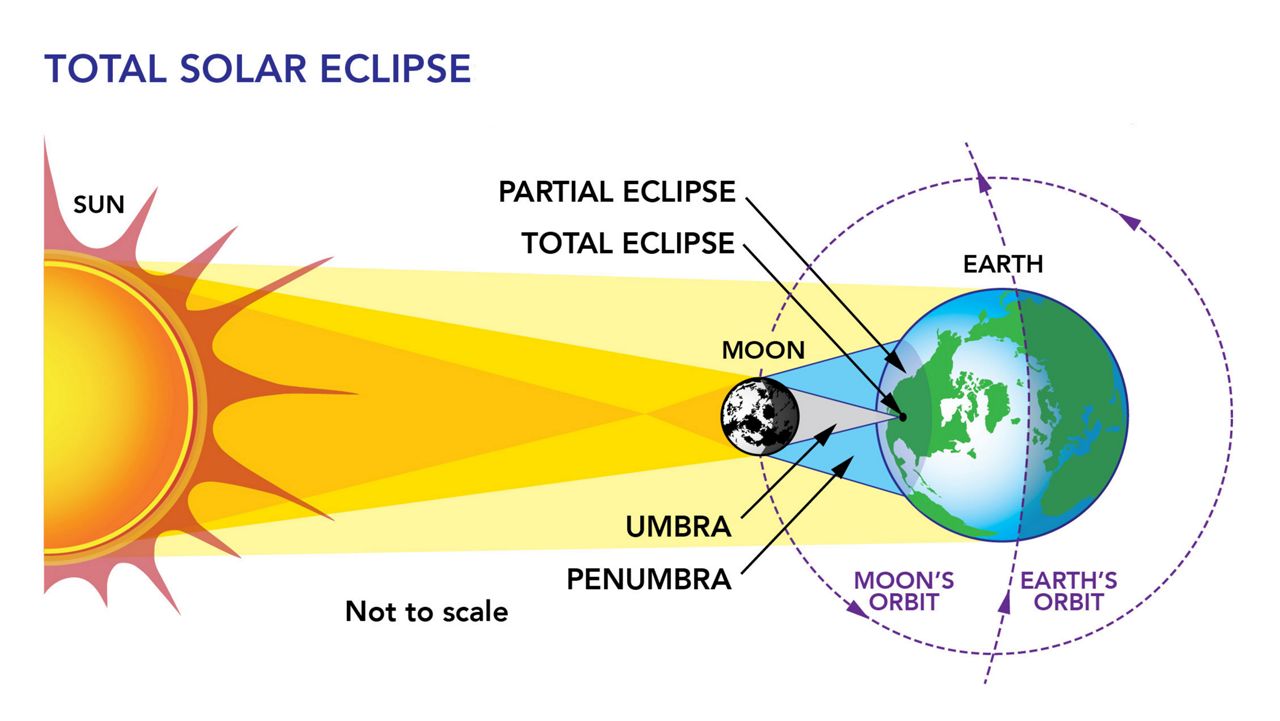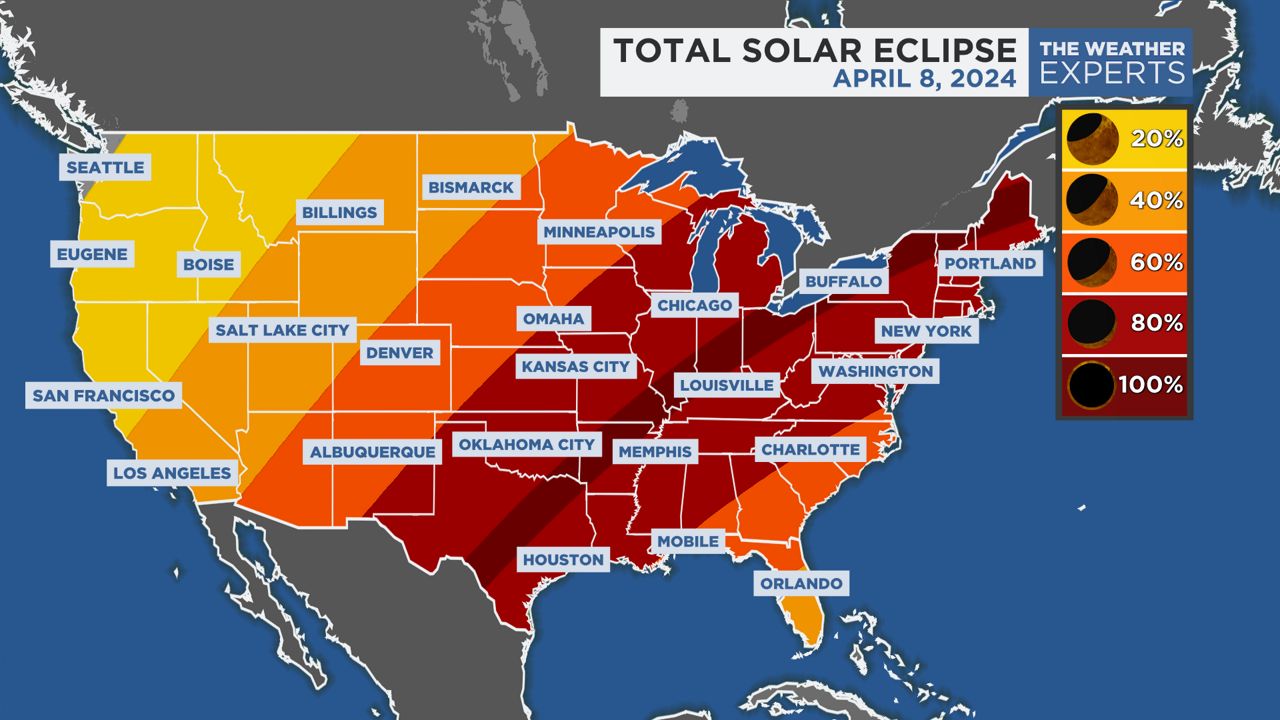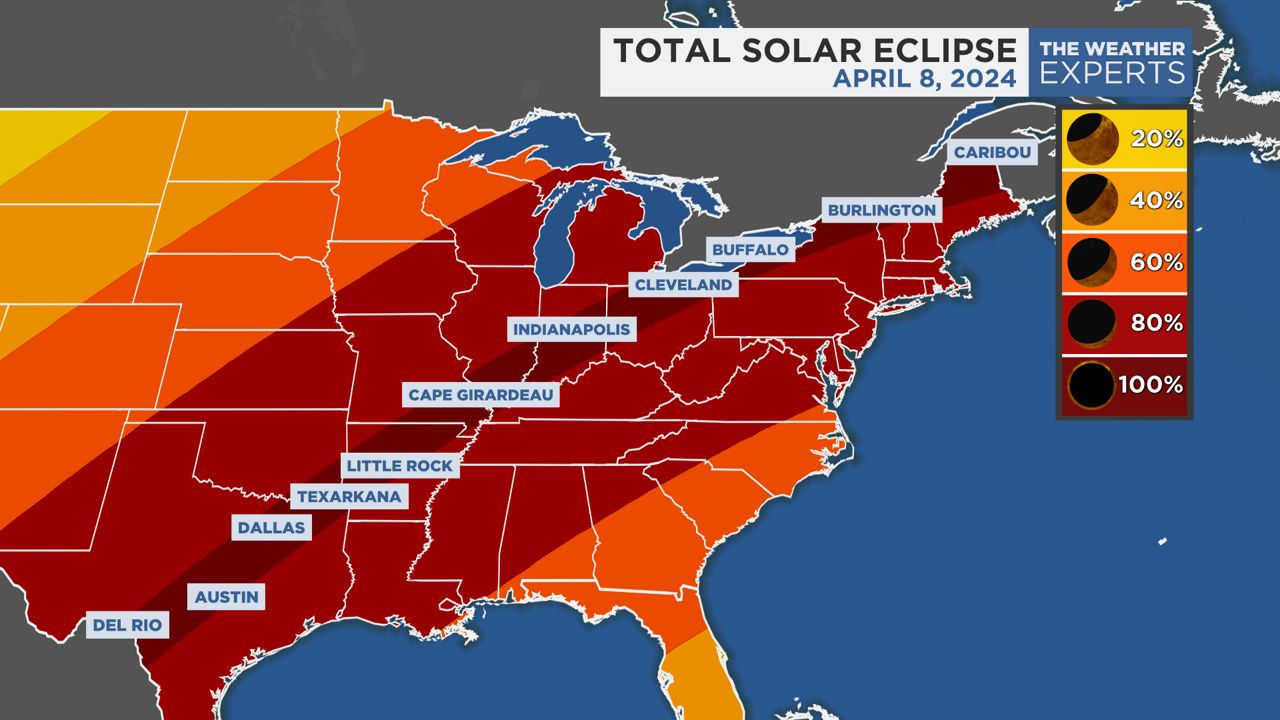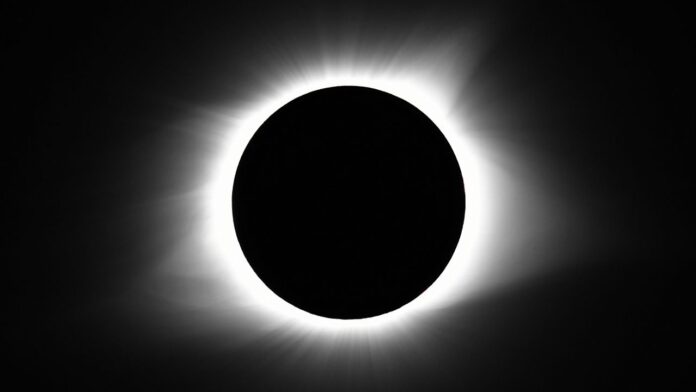The Great American Solar Eclipse will darken the skies on Monday, April 8, 2024, and cast a shadow of totality across parts of 15 U.S. states. Here is what you need to know.
What is a total solar eclipse?
According to NASA, the definition of a solar eclipse is “when the moon passes between the sun and Earth, casting a shadow over parts of Earth and blocking the face of the sun for observers in those locations.”
A solar eclipse can only happen during the new moon phase.
If you’re near the center of the shadow and experience a total eclipse, the skies will darken, as if it were dawn or dusk. Only the outer ring of the sun is visible during totality, which is the sun’s outer atmosphere, or corona.
People who aren’t in the center of the moon’s shadow only experience a partial solar eclipse. The moon doesn’t perfectly align and completely block out the sun during a partial solar eclipse. Part of the sun will be covered, giving it a crescent shape when you view it with your eclipse glasses.

(NASA)
A solar eclipse is the opposite of a lunar eclipse, which is when the Earth is positioned between the Moon and Sun.
Where is the path?
The path of the eclipse will cross northeast across the United States. Every state in the Lower 48 will experience at least a partial eclipse, with the moon blocking out part of the sun.

The path of totality is the best place to view a total solar eclipse. It’s where you can see the moon completely cover the sun and where the moon casts a shadow on the Earth.
The path of totality will cross over parts of 15 U.S. states, from Texas to Maine. Here is a zoomed in map, showing cities that will experience totality during the eclipse.

What time is the total solar eclipse?
In the United States, totality will begin in Texas at 1:27 p.m. CT and ends in Maine at 3:35 p.m. ET, lasting just over an hour.
Here is a list of cities in the path of totality and when the partial and total eclipse begins and ends.
To find your town, you can check this interactive map.
The forecast
Weather on the day of the solar eclipse will play a significant role in your viewing experience, most notably, cloud cover and visibility. A clear sky will not only give you the best view of the eclipse, but give you the starkest contrast during totality when it goes dark outside.
Even if the skies aren’t completely clear, mostly sunny or partly cloudy skies can still offer a fabulous display during the eclipse.
Unfortunately, some areas in the path of totality could see thick clouds and overcast skies above on the day of the eclipse. Skies will dim and it will get darker outside during totality, but you won’t get the same spectacular show as you would under clear skies.
Here is the forecast cloud cover during the time of the total solar eclipse.
Based on the current forecast, these are the areas in the path of totality with the best probability for clear skies: Northern New England, Upstate New York, southern Missouri and central Indiana.
These are the areas in the path of totality where there is a higher probability of clouds obstructing the view or rain and storms disrupting the eclipse: Texas, Oklahoma, Arkansas, Ohio and Pennsylvania.
There is still uncertainty, however, and the forecast can still change. For your latest local forecast, check the the Spectrum News App.
Solar eclipse safety
The only time it’s safe to view the solar eclipse without eye protection is during totality, when the moon completely blocks out the sun. Otherwise, you’re risking severe eye injury, the same way looking at the sun on any other day would cause.
Sunglasses do not offer your eyes enough protection during a solar eclipse, and viewing it with binoculars or a telescope could magnify light from the sun, making them unsafe.
Eclipse safety experts suggest glasses that block out all UV light from the sun and nearly all visible light, so when worn indoors, bright lights are only faintly visible.
Be sure to buy your solar eclipse glasses from a reputable vendor. Here are some helpful resources to ensure you and your family’s safety.





